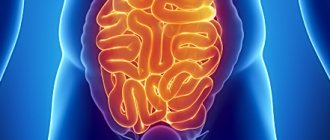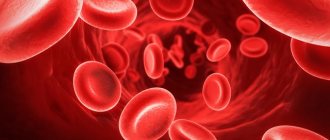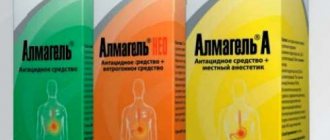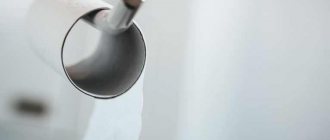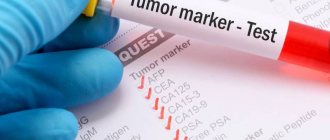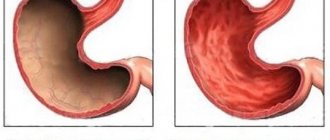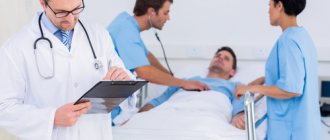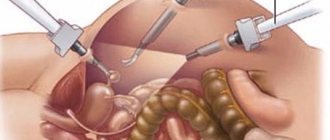Gastroenterology offers many techniques to help improve digestion. Treatment includes diet, medications, and massage. The specifics of therapy depend on the indications and contraindications. Massage therapy is prescribed to patients starting from infancy, if necessary.
Massage of the digestive organs helps improve peristalsis, relieve constipation and diarrhea, and therefore smooth out the overall symptomatic picture of inflammatory bowel diseases.
Massage for indigestion
If there are diseases of the digestive system, a massage may be prescribed. The effect is possible during the period of remission, but in the acute phase of a chronic disease the techniques are not used.
Abdominal massage for digestion is useful because:
- Improves the secretion of the digestive organs;
- Normalizes the functioning of the neuroregulatory apparatus;
- Improves blood circulation;
- Brings a favorable resolution of pathological processes closer and prevents relapses;
- Stimulates the functional potential of intestinal smooth muscles;
- Strengthens the abdominal muscles;
- Prevents and eliminates reflex changes occurring in the integumentary tissues.
For diseases of the gastrointestinal tract, massage is prescribed as a course and performed by a medical professional. If the internal organs are not properly stimulated, complications may occur. Outpatient treatment of the digestive system is possible after consultation with the attending physician and if you have certain skills.
Massage and digestion: indications
Constipation and indigestion are the most common indications for massage. Sessions are useful for patients with gastritis, colitis, and inflammatory bowel diseases. Various techniques are used for adhesions and stomach ulcers.
Massage for diseases of the digestive system is indicated in the presence of the following symptoms:
- Prolonged lack of appetite and weight loss;
- Bloating and increased gas formation;
- Discomfort in the abdominal area;
- Sedentary lifestyle;
- Reflux and heartburn;
- Hepatitis;
- Stomach prolapse;
- Postoperative adhesions;
- Constipation in the early stages.
Massage techniques help in the treatment and prevention of diseases of the digestive system. A targeted treatment may be prescribed for a course of 1 month.
Classic knee massage
It is performed with the patient lying on his back. Treatment of joints consists of massaging the kneecaps, lateral and medial sides of the joint. Stroking, patting and rubbing are used. Can be performed on a straight or 90° bent knee joint.
- Place both hands on the lower part of the affected area (below the kneecap). Alternately move your hands by stroking 2-5 times.
- Move one hand to the side and the other towards the middle of the knee joint.
- Place the pads of your thumbs on the lower area of the affected joint.
- Do circular kneading (circular movements through the center of the kneecap upwards).
- At the very top of the joint, spread your thumbs apart and lower them down, connecting at the starting point.
- Rub the sides of the knee joint using circular movements with the fingertips of both hands, simultaneously on both sides.
Read also…. How to massage your arm at home after a fracture
Therapeutic exercises prevent joint deformation, help maintain full range of motion, and prevent muscle atrophy and arthrosis of the knee joint.
Massage to improve digestion in Crohn's disease and UC
Massage for inflammatory bowel diseases allows not only to alleviate chronic symptoms, but also to diagnose the most problematic parts of the gastrointestinal tract. Many gastroenterologists believe that this is a universal method for eliminating disorders.
Massage techniques relieve tension in places of spasms, stimulate bile secretion and sympathetic innervation in the solar plexus area.
Massage is indicated for signs of a prolapsed stomach. With its help, reflux conditions characteristic of patients with Crohn's disease and ulcerative colitis are eliminated. During massage, the projection of Vater's nipple relaxes, which subsequently leads to stimulation of bile secretion and better digestion of fats. The pressure inside the abdominal cavity is equalized and blood circulation improves.
Massage of the pancreas for pancreatitis
Reduces tension in the bile ducts, improves blood supply to these organs, and normalizes their movement. Massage for pancreatitis is much more difficult than any other due to the fact that access to the pancreas is difficult, because it is hidden behind the colon and stomach. Pancreatic exercises are an excellent means of preventing the disease.
Segmental massage of the pancreas and gallbladder shows good results in the initial period of hepatic colic and chronic inflammation of the bile ducts, and also serves to prevent the recurrence of chronic pancreatitis. But we must always remember that only a doctor can provide qualified assistance in the acute course of the disease.
The procedure should be performed very carefully, constantly assessing the state of health. For beginners - 2-3 repetitions, increasing up to 10 times. If signs of fatigue or other unpleasant sensations appear, exercise should be stopped.
Basic methods
- Take a deep breath, hold your breath as you exhale. Tighten your stomach, counting to 3, and relax your abs.
- Take a deep breath again, and hold your breath as you exhale. During this time interval, inflate your stomach as much as possible, counting up to 3.
- Relax.
Read also…. Massage scheme for dacryocystitis in newborns
Exercise whenever you have free time. You will feel the tension in the diaphragm. Tighten your stomach, relax, draw in and out, and relax again.
Even these massage techniques may be enough to prevent pancreatitis.
Abdominal massage for constipation
Defecation during constipation is complicated and provokes pain in the abdomen and anus. Long-term constipation leads to hardening of stool and anal fissures. Soreness, nausea, bloating, dizziness and headaches accompany constipation.
Depending on the technique, abdominal massage for constipation can be:
- Hardware.
The technique involves performing it using special equipment and in a clinical setting. Use vacuum, microcurrent or roller massagers.
- Pointed.
Acupressure acts quickly and precisely. It allows you to speed up intestinal motility during constipation.
- Segmental-reflex.
During the procedure, the specialist acts on the nerve endings and points responsible for the organs of the gastrointestinal tract, located in the lumbar and thoracic regions of the back.
Depending on the chosen method, the massage therapist can influence the gastrointestinal tract without the use of devices, stimulating the abdominal cavity with his hands. The massage is performed in a clockwise direction with periodic and gentle pressure. Self-massage is done using a similar scheme, which helps improve peristalsis and reduce complications of constipation, such as increased gas formation and accompanying abdominal pain.
Chronic gastritis
Indications for massage: chronic gastritis in subacute and remission periods.
Contraindications for massage:
- the disease is in the acute stage;
- severe pain syndromes;
- general contraindications.
Massage plan:
- Studying the paravertebral areas of the segments of the vertebrae D9-D5 and C-7-C-3, the reflexogenic zones of these segments on the back, neck, front chest, and abdomen.
- Stomach massage.
Massage technique
The patient is placed on his stomach, cushions are placed under the ankles and under the stomach (if necessary). Perform:
- Treatment of the spinal areas of the vertebrae D9-D5 and C-7-C-3 by flat surface and deep stroking with the palmar surface of the hands.
- Circular rubbing with the ends of the fingers, sawing, shading with the pad of the middle finger, pressing tightly to the skin and displacing the soft tissues in the direction of the spine.
- Kneading the muscles by pressing;
- Vibration is continuous in the direction from below to overlying segments.
The latissimus dorsi and trapezius muscles are massaged:
- By stroking superficially and deeply towards the axillary areas of the corresponding sides.
- Rubbing with the palm of the brush, shading and sawing.
- Kneading, pressing, moving, stretching.
- The edges of the muscles - by transverse or longitudinal kneading, shaking.
- The inner edge and lower corner of the shoulder blade - by stroking and rubbing with fingers and the ulnar edge of the palm.
The sternoclavicular - mastoid muscles are massaged along the course of muscle fibers from the mastoid process to the sternoclavicular joints:
- Stroking, pincer-like rubbing.
- Kneading with tongs longitudinally and transversely.
- By shaking.
The anterior areas of the chest are massaged:
- Stroking and rubbing the sternum with fingers, sternocostal joints, supra- and subclavian areas.
- Stroking the sternum with your fingertips, directing movements towards the armpits.
- Rubbing with longitudinal and spiral fingertips.
- Kneading the chest muscles by displacement, pressing, edges - longitudinal kneading.
- Stroking the VI-X ribs on the left with the ends of your fingers in a spiral manner.
- Rake-like stroking and rake-like rubbing of the intercostal spaces in the direction from the sternum to the spine.
- Stroking and rubbing the costal arches with the ends of the fingers from the sternum to the spine.
The anterior abdominal wall is massaged: with a gentle circular flat surface stroking around the navel clockwise with the dorsal end phalanges of 2-4 fingers, resting the hand on the first finger.
The surface of the abdomen is massaged by stroking the palm of the hand: first, gentle, soft, superficial, and as the muscles relax, deeper. Continue by rubbing: flat with the palm, sawing with the side surface of the palm, crossing. Sawing is combined with grinding: between the ulnar edges of the palms, a fold of skin is grabbed along with the subcutaneous base and sawing grinds it, gradually covering the entire surface of the abdomen.
Abdominal massage technique for digestive diseases
The soft tissues of the anterior wall of the peritoneum are massaged by kneading: longitudinal, transverse, rolling.
The rectus abdominis muscles are massaged: with forceps-like stroking, ironing, spiral and zigzag rubbing, transverse kneading from bottom to top and vice versa.
Massage of oblique abdominal muscles:
- grasping stroking of the lateral surfaces of the abdomen, circular rubbing, intersections;
- transverse kneading, pressing and stretching (the latter is best done with the patient lying on his side);
- rubbing the ribs and iliac crests with your fingers;
- abdominal shaking: the massage therapist places his hands on both sides of the patient’s abdomen so that the thumbs lie at the level of the navel, and the others on the back, and perform oscillatory movements in the horizontal and vertical directions;
- at the end and between techniques, the entire abdominal area is stroked.
The abdominal plexus is massaged: by spiral stroking and rubbing with pads of the middle and index fingers in the direction from the sternum to the navel; continuous labile vibration in the same direction, stable vibration in the area where the pain points of the abdominal plexus are located.
Massage of the stomach is carried out with preliminary relaxation of the abdominal wall in front. Circular stroking of the anterior wall of the abdomen on the projection of the stomach from right to left, epigastric and left hypochondrial zone: first flat, superficial and gentle, then deep.
Spiral-shaped gentle rubbing of the integumentary tissues and stomach in the area of the epigastric left hypochondrium with fingers. Rubbing the left costal arch with fingers. Next, the massage is performed by: continuous vibration of the stomach with the palm of the hand, shaking the stomach with fingers placed in a rake-like manner on the epigastric region, and pushing the stomach.
Intermittent vibration in the form of puncturing and light patting of the projection areas of the stomach is used only when a stimulating effect is necessary: with atony of the stomach and reduced secretory ability. Finish the abdominal massage with stroking.
The procedure lasts 15-20 minutes during the course of treatment - 12-15 massages every day or every other day.
Massage for diarrhea
Unlike constipation, with diarrhea, intestinal motility, on the contrary, is increased. In this case, irritation of the walls occurs, the mucous membrane suffers, and the functions of the autonomic nerve endings that regulate the contraction of the intestinal muscles are disrupted.
Chronic diarrhea is a typical symptom of IBD. During the remission stage of the disease, massage can be prescribed, as in the subacute period. However, during an exacerbation, the intestines are not affected due to the risks of worsening the condition. Also, massage for diarrhea is contraindicated if the patient is prone to intestinal bleeding.
Massage for gastrointestinal diseases: Video
Loading... Related posts:
Features of chest massage
Features of manual therapy for scoliosis
Features of foot massage for children
Shiatsu massage: secrets of oriental masters Video on the topic: Self-massage of the prostate gland at home Lesson 2. Intraoral massage by Ivan Badin Inflammation of the sciatic nerve. Sciatica (sciatic nerve inflammation, pinching) Self-massage from the butt ears and inner thighs. Morning ritual 2.
Features of massage to improve digestion
For diseases of the digestive system, massage allows you to influence organs affected by pathological processes, reflexogenic and other zones segmentally associated with the problem area of the gastrointestinal tract. If the entire digestive tract is involved in the pathological process, the effect is entirely on the affected organ.
If the patient has increased secretory function and there is a tone of the smooth muscles of the intestines, the massage therapist works using a gentle technique that involves influencing the abdominal cavity and internal organs.
Massaging the front wall, the specialist performs:
- Stroking;
- Trituration;
- Kneading the muscles;
- Vibration.
When massaging internal organs, the massage therapist:
- Massages the desired area with gentle stroking movements;
- Rub the affected area with your fingers;
- Performs vibration technique.
The described techniques are performed intensively if secretory function is impaired and smooth muscle tone is increased. At the same time, the massage therapist rubs, strokes, lightly taps the front wall of the abdomen, using lashing, shaking, pushing and chopping techniques.
The method of massage depends on the medical history, clinical manifestations of the disease of the digestive system, as well as the individual characteristics of the patient. A lasting therapeutic effect is achieved through massage, diet, drinking plenty of fluids, medication support and physiotherapy.
Massage for high stomach acidity
Increased acidity in the stomach occurs due to excessive production of gastric juice; during this period there is a greater load on the stomach and food processing occurs more slowly, despite the active secretion of gastric juice. Massage is carried out to restore gastric motility and improve blood flow in the abdominal cavity. A procedure is performed in the area of the spine and paravertebral zones, reflexogenic zones of the dorsal and cervical spine, massage of the abdomen and stomach, and abdominal muscles.
Massage of the spine and paravertebral areas begins with light stroking and rubbing movements. When the muscles have warmed up, they begin “sawing”, alternating with stretching in the direction from the spine to the sides.
When changes in the elasticity of the skin to the touch become noticeable, you need to start rubbing and rolling the paravertebral area and neck, then place your palms on the spine from the neck, and make vibrating movements with your hand. Finish with longitudinal kneading of the cervical region, patting the entire spine and stretching relaxation movements. Manipulations are carried out in a sitting position.
Massage of the stomach and abdomen begins with circular stroking movements, especially in the navel area, then rises higher and rubs the area of the left hypochondrium with similar manipulations, smoothly pressing the fingers into the stomach. Make vibration movements from left to right, alternating with patting and rubbing.
Massage of the abdominal muscles begins in a lying position, placing a small cushion under the head. They start by gently stroking the abdominal press with the back of the hand, then turn the palm over and begin to press the stomach inward with light, smooth movements, then the palms and fingers are completely straightened and perform light vibration actions. Afterwards, make circular movements with the palm over the entire abdominal area, massaging and stretching the skin in different directions.
Contraindications
Massage is certainly an effective technique to help relieve the symptoms of inflammatory bowel disease. However, before you sign up for sessions or start practicing self-massage, you should consult a doctor.
Contraindications (or restrictions to the use of various techniques) may include:
- Tuberculosis;
- Haemorrhoids;
- Diseases of the abdominal organs;
- Oncological neoplasms (cancer);
- Pelvic diseases;
- Menstruation in women;
- Phlebeurysm;
- Bleeding;
- Fever;
- Pregnancy (regardless of trimester);
- Nausea, urge to vomit;
- Skin damage in the affected area (injuries, cuts, burns).
It is not advisable to start a massage on an empty or full stomach. 10-15 minutes before the start of the session, it is recommended to drink a glass of water without gases. After the procedure is completed, you should limit yourself from eating for the next 1-2 hours. Massaging the internal organs does not begin when the bladder is full.
Follow us on social networks
Contraindications to massage
There are quite a few contraindications to medical massage. Absolute contraindications include the following diseases:
- malignant formations;
- dermatological diseases: herpes, lichen, pyoderma, etc.;
- acute cerebrovascular accidents;
- myocardial infarction;
- epilepsy;
- purulent inflammation;
- bleeding disorders;
- thrombophlebitis;
- recent bleeding;
- phlebeurysm;
- aneurysms;
- atherosclerosis.
Relative or temporary contraindications include fever, increased body temperature, respiratory diseases, and pregnancy. In case of peptic ulcer disease, it is important to achieve scarring; you can resort to massage only during exacerbations. After undergoing surgical interventions, it is important to wait a certain time; the doctor will tell you when you can go for a massage course.
